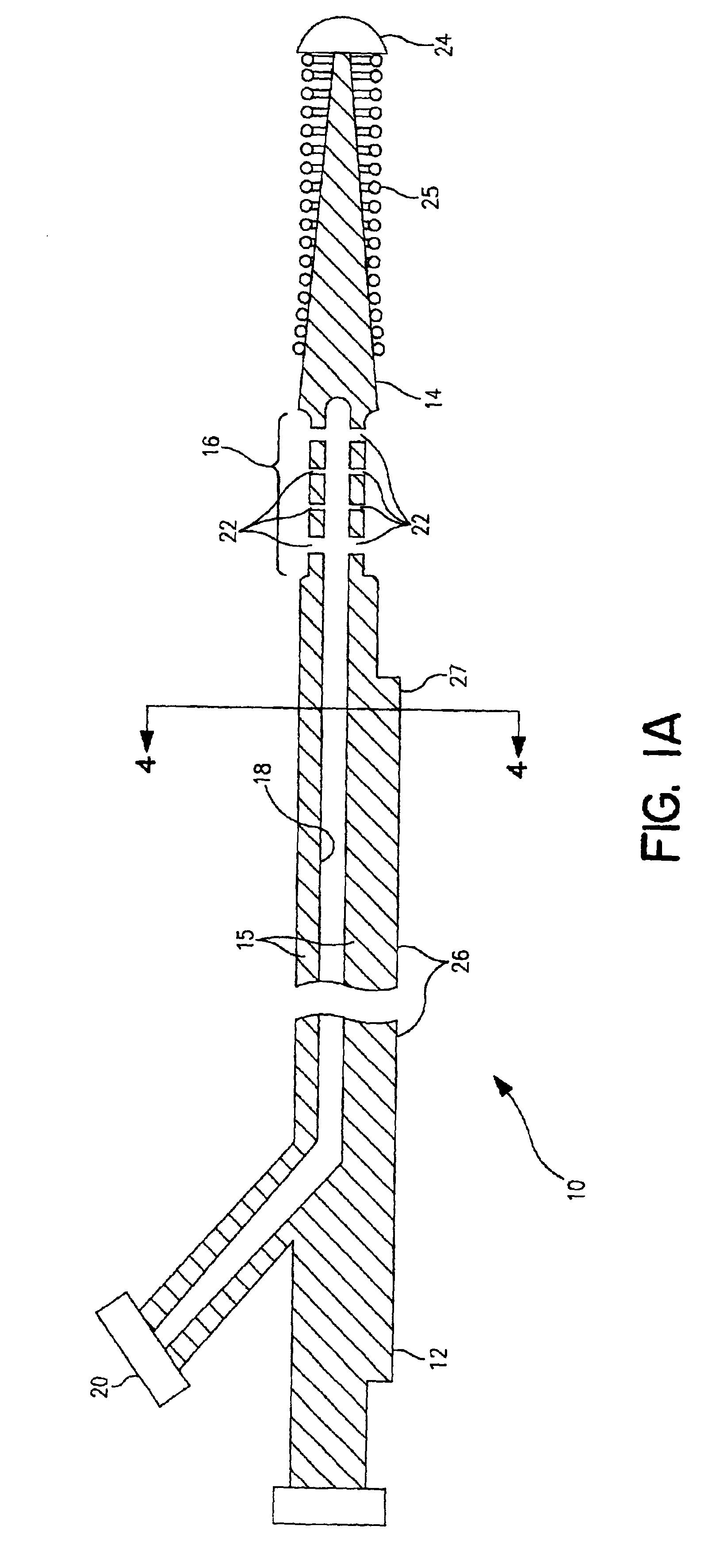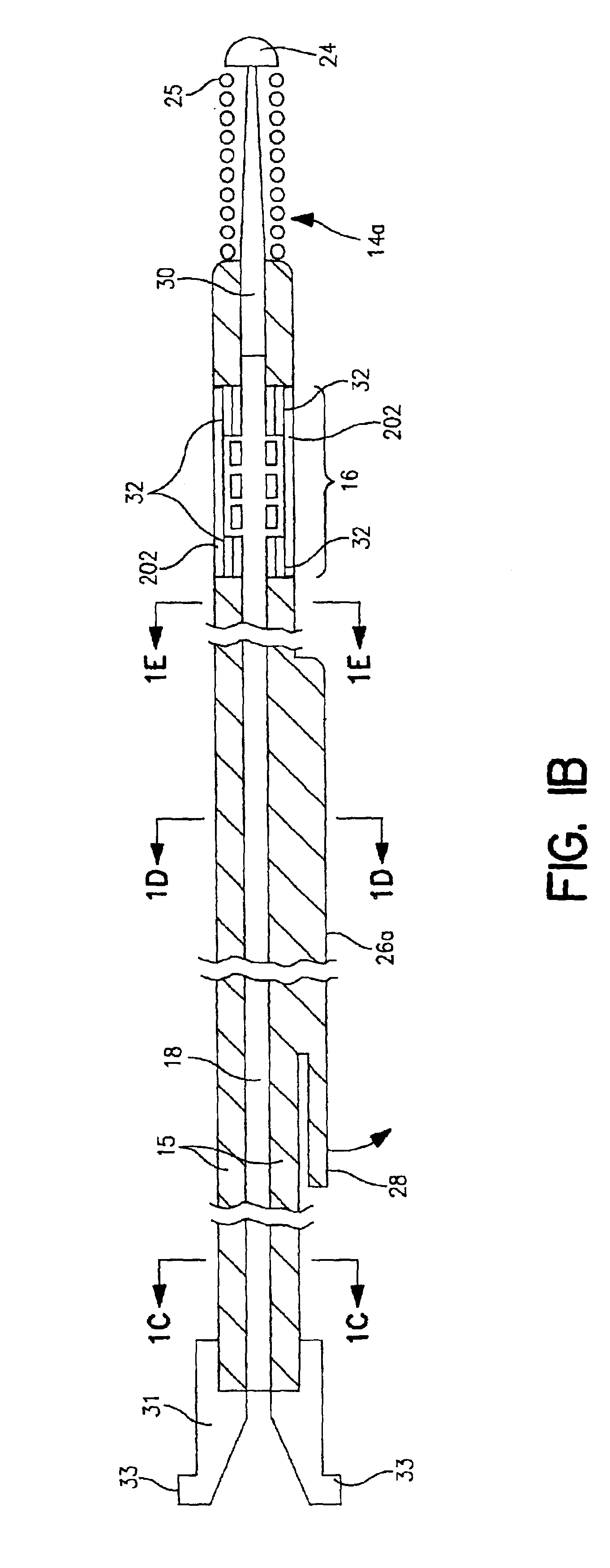System and method for placing endocardial leads
a technology of endocardial leads and leads, which is applied in the field of system and method for placing endocardial leads, can solve the problems of permanently implantable endocardial leads, difficult to locate the desired path, and difficulty in routing an endocardial lead along a desired path to implant the electrode or electrodes in a desired implantation site,
- Summary
- Abstract
- Description
- Claims
- Application Information
AI Technical Summary
Benefits of technology
Problems solved by technology
Method used
Image
Examples
Embodiment Construction
[0048]The current invention provides a system and method for introducing one or more electrodes into cardiac veins or coronary arteries. The system includes a low profile guiding device having a fixation mechanism at the distal tip for anchoring the guiding device in position while one or more electrodes are advanced over the body of the guiding device. In one embodiment, the fixation mechanism is capable of retracting such that it is co-axial with the guiding device for easy withdrawal of the device after electrode placement is complete.
[0049]FIG. 1A is a cross-sectional side view of a guidewire 10 including a proximal end portion 12 and a distal end portion 14, which may be of a standard length of 175-310 cm long, or which may be of a non-standard length. The guidewire of the preferred embodiment has an elongated tubular body 15, and may have an outer diameter of between 0.014 and 0.038 inches at the proximal end portion. Preferably, the outer diameter of the proximal end portion ...
PUM
 Login to View More
Login to View More Abstract
Description
Claims
Application Information
 Login to View More
Login to View More - R&D
- Intellectual Property
- Life Sciences
- Materials
- Tech Scout
- Unparalleled Data Quality
- Higher Quality Content
- 60% Fewer Hallucinations
Browse by: Latest US Patents, China's latest patents, Technical Efficacy Thesaurus, Application Domain, Technology Topic, Popular Technical Reports.
© 2025 PatSnap. All rights reserved.Legal|Privacy policy|Modern Slavery Act Transparency Statement|Sitemap|About US| Contact US: help@patsnap.com



